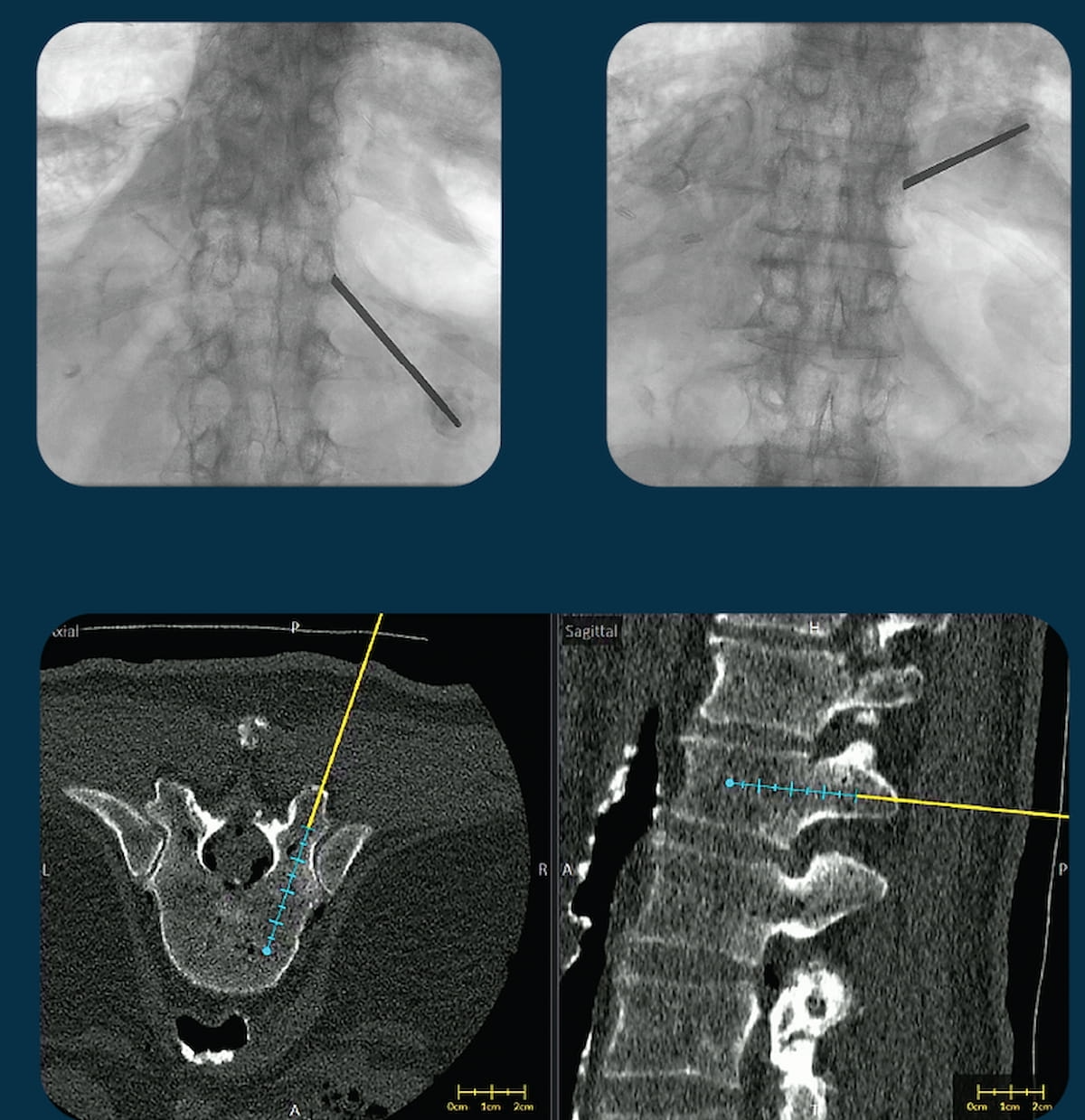- AI
- Molecular Imaging
- CT
- X-Ray
- Ultrasound
- MRI
- Facility Management
- Mammography
FDA Clears Updated 3D Imaging Guidance for Spine Surgery
The second-generation version of the VUZE System reportedly offers expanded functionality and incorporation of varied sources of 3D imaging data, including cone-beam CT scans obtained in the OR.
The Food and Drug Administration (FDA) has granted 510(k) clearance for a second-generation update of the VUZE System, which overlays positioning of surgical tools from intraoperative X-rays onto cross-sectional, pre-operative computed tomography (CT) scans.
VUZE Medical, the manufacturer of the VUZE System, emphasized that the new version of the software can be utilized with a larger range of surgical C-arm devices. The company added that the updated VUZE system may incorporate 3D imaging source data from cone-beam CT scans obtained in the operating room as well as pre-operative CT imaging.
The second-generation update of the VUZE system, which overlays positioning of surgical tools from intraoperative X-rays onto cross-sectional, pre-operative computed tomography (CT) scans, has garnered 510(k) clearance from the Food and Drug Administration (FDA). (Images courtesy of VUZE Medical.)

Expanded functionality with the second-generation version of the software also enables surgical planning on compatible standalone laptops, according to VUZE Medical.
“Our second generation significantly extends the applicability of the VUZE System across desired surgical workflows and operating room setups,” said David Tolkowsky, the founder and CEO of VUZE Medical. “In each of those situations, our aim is to preserve the advantages of common X-ray guidance while addressing its shortcomings.”
While noting a current focus of the VUZE System in facilitating minimally invasive thoracolumbar stabilizations, VUZE Medical said it plans to pursue additional clearances for spinal and skeletal interventions.
Can CT-Based AI Provide Automated Detection of Colorectal Cancer?
February 14th 2025For the assessment of contrast-enhanced abdominopelvic CT exams, an artificial intelligence model demonstrated equivalent or better sensitivity than radiologist readers, and greater than 90 percent specificity for the diagnosis of colorectal cancer.
Key Chest CT Parameters for Body Composition May be Prognostic for Patients with Resectable NSCLC
February 11th 2025A high intermuscular adipose index has a 49 percent increased likelihood of being associated with lower overall survival in patients with resectable non-small cell lung cancer (NSCLC), according to new research.
Comparative AI Study Shows Merits of RapidAI LVO Software in Stroke Detection
February 6th 2025The Rapid LVO AI software detected 33 percent more cases of large vessel occlusion (LVO) on computed tomography angiography (CTA) than Viz LVO AI software, according to a new comparative study presented at the International Stroke Conference (ISC).
New CT Angiography Study Shows Impact of COVID-19 on Coronary Inflammation and Plaque
February 5th 2025Prior COVID-19 infection was associated with a 28 percent higher progression of total percent atheroma volume (PAV) annually and over a 5 percent higher incidence of high-risk plaque in patients with coronary artery lesions, according to CCTA findings from a new study.
